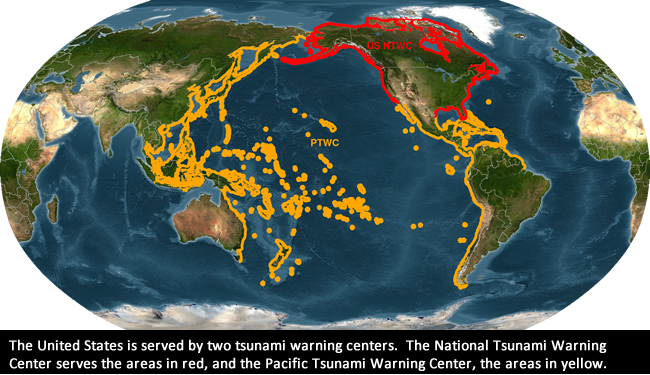
Earlier this year an underwater volcano erupted in Tonga, triggering a widespread tsunami. While advisories were issued, there was confusion at the time because the event wasn’t triggered by an earthquake, which tsunami forecasting models don’t take into account.
And last week a 7.4 magnitude earthquake in Japan sparked tsunami alerts across the country. The Japanese tsunami system worked very well, issuing alerts within minutes of the earthquake.
But how would have the US Tsunami Warning System handled a similar situation? According to a recent report, experts are skeptical that the United States would have been able to issue alerts at similar speeds.
PROTECT YOUR HOME AND CAR WITH THE BEST LIGHTNING AND EMP PROTECTION AVAILABLE…
The report, written by an advisory panel of tsunami experts, says the US warning system is in dire need of an overhaul, struggling with outdated technology, delayed forecasts and disjointed communication.
It warns the National Oceanic and Atmospheric Administration Science Advisory Board (NOAA SAB) that there is an “urgent need for action” as it is only a matter of time until another tsunami poses a threat to the coastal US.
“The problems we observed and commented on result in a great deal of confusion among local officials, the public, and the media when a tsunami occurs,” Rocky Lopes, co-chair of the Tsunami Science & Technology Advisory Panel (TSTAP), and a co-author of the report, told CNN.
Tsunamis are extremely large waves that occur as a result of a sharp displacement in the ocean. They are most commonly caused by earthquakes but can also be triggered by volcanic eruptions and landslides. These towering waves can cause widespread damage to coastal communities and, most importantly, result in high death tolls.
Areas along the Pacific Ocean such as California, Alaska and Hawaii are particularly at risk of tsunamis. That’s because earthquakes and volcanic activity are heightened around the Pacific Ocean basin, nicknamed the “Ring of Fire.”
“It is estimated that hundreds of thousands of residents and employees as well as millions of visitors are within tsunami-prone areas along the coastal regions of the U.S. each year,” Dr. Nate Wood, supervisory research geographer for the United States Geological Survey, said in the report.
Given Tonga’s recent volcanic eruption, and the ensuing tsunami waves that reached the West Coast of the United States, urgent updates are needed to protect a growing US coastal population, according to the advisory panel.
PROTECT YOUR HOME AND CAR WITH THE BEST LIGHTNING AND EMP PROTECTION AVAILABLE…
Two different offices can mean two different messages
The report’s most urgent recommendations include improvements to the NOAA’s Tsunami Warning System and its two Tsunami Warning Centers. There are “gaps and inconsistencies throughout the tsunami warning and forecast process,” the report warns.
Problems include delayed communication of warnings, outdated technology and lack of coordination between the two centers, which often lead to conflicting messages to the public.
The National Tsunami Warning Center, located in Palmer, Alaska, covers the Lower 48 states and Alaska and Canada, while The Pacific Tsunami Warning Center, located in Honolulu, serves the Hawaiian Islands as well as the US Pacific Islands, Caribbean territories and British Virgin Islands.
Due to differing locations and needs, the two centers have individually diversified their technology and methods, causing discrepancies and preventing a seamless backup if one of the two centers were to malfunction, according to the report.
The website used to consolidate all of the tsunami bulletins from both warning centers, tsunami.gov, also presented many concerns for TSTAP.
“Tsunami.gov is a consolidated website that presents information in real time from both tsunami warning centers. Unless you really understand where the information is coming from and drill down into all the data, it is hard to know which center is issuing which bulletin and which applies to where,” Lopes told CNN.
The lack of organization and consolidation makes the website difficult for the public and local officials to understand. That has led to problems in recent months.
“For example, when the Tonga volcanic eruption happened on January 15th, some media reported that the US West Coast was under a tsunami warning, and it was not a warning. It is called a tsunami advisory, which is a lower level alert that doesn’t require, for example, evacuations,” Lopes said.
PROTECT YOUR HOME AND CAR WITH THE BEST LIGHTNING AND EMP PROTECTION AVAILABLE…
Timing is key
Although initial reports come quickly from the two warning centers, a full forecast detailing where and when the tsunamis may occur can take up to three hours, according to the report.
The advisory panel notes that after an 8.2 magnitude earthquake hit Alaska on July 28, 2021, West Coast states were “under evaluation” for three hours after the event. This would have left one hour — before the tsunami had reached land — for officials to make announcements regarding evacuations if they had been needed.
The advisory panel emphasized the need for the tsunami warning centers to issue earlier estimates of impacts. It said that delayed messaging “leaves decision makers lost and unable to make important life safety decisions in the time frame necessary to issue a successful evacuation if needed.”
New technology, including data from satellites, could potentially help the warning centers to make more accurate and timely forecasts, according to the advisory panel.
And the tsunami experts highlight the lack of a “standardized system for real time monitoring of the activity, tsunami potential, and tsunami risk” for sources other than earthquakes.
This means for tsunamis caused by landslides or volcanic eruptions, like the Tonga volcano, there are currently no forecasting tools, which could have catastrophic effects.
TSTAP encourages collaboration between state and federal agencies to help forecast these events in the short term, while NOAA works to integrate these other sources into their tsunami forecast database.
The advisory panel hopes its report will help the two tsunami warning centers to “better coordinate and align their methods, forecasting, and messaging.”
“NOAA will provide a formal written response to our report, which is due by the end of this calendar year. That report will detail what they are doing in response to our recommendations and that will be posted on the NOAA SAB website,” Lopes said.
He said that if there are actual changes to the systems, there will also be a public notification statement on the NWS website.
PROTECT YOUR HOME AND CAR WITH THE BEST LIGHTNING AND EMP PROTECTION AVAILABLE…
The time is now to prepare for tsunamis
Sunday is the start of Tsunami Awareness Week, which encourages people who live in high risk areas to prepare for potential events.
State, federal and local offices urge coastal communities to recognize the risk they are under and become as “tsunami ready” as possible.
States such as California and Alaska will host virtual programs and social media conversations this week centered around understanding the warning signs, having a planned evacuation route and building an emergency kit.
Tsunami Awareness Week coincides with the anniversary of the 1964 Alaska tsunami that killed over 130 people and caused unprecedented damage to property. [CNN, NOAA]
StrangeSounds.org has been banned from ADS NETWORKS! CLICK HERE TO DONATE AND SUPPORT ME, MY WORK AND MY WEBSITE!
NOW PREPARE FOR THE NEXT NATURAL DISASTER AND EMERGENCY:
PROTECT YOUR HOME AND CAR WITH THE BEST LIGHTNING AND EMP PROTECTION AVAILABLE…
DRINK CLEAN WATER USING THE BEST HOME WATER FILTER AROUND…
You should really subscribe to QFiles. You will get very interesting information about strange events around the world.



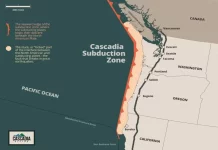
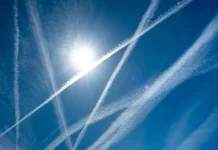
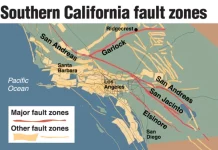
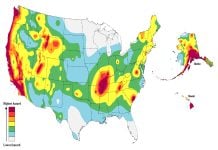







This “created chaos” is just typical alinskyism 101 by demonrat$ and rino$ handled by godless foreigner$.